-
Posts
978 -
Joined
-
Last visited
Content Type
Profiles
Forums
Events
Posts posted by arc
-
-
As you say it is a lot of work. Now that you mention phase changes, the Outer Core has a considerable volume and is currently liquid.
I'll have to stop thinking of the Mantle as a liquid. Wikipedia on the Mantle says "The mantle is solid but acts like a very viscous liquid over geological time". Wikipedia: https://en.wikipedia.org/wiki/Mantle_(geology)
So at least the temperature range I worked with seems about right. I wonder if the expansion coefficient can be found somewhere?
Hi Rob, I have ran this model repeatedly over in my mind for a few years now and have imagined various sticky or viscous materials that we all have probably encountered as possible proxies to simulate the mantle and its reluctance to be moved radially outward. Would cold taffy work? A big ball of cold bubble gum or asphalt tar? They may furnish the viscosity but the gravitational driven restoration of the material is missing, the mantle will eventually move inward towards the core and this gravitationally derived movement and pressure needs to be simulated also.
The mantle's thickness is also a major contributor in this mechanism, it provides a type of mechanical increase in proportion to the difference in radius of the lower and upper boundaries.
As an example; if we had two hollow spheres that were made of a very hard but resilient material, both with the same outer radius' but with one having a wall thickness three or four times greater than the other. Next, if the two spheres were then hydraulically displaced outward at the same degree beyond the thicker sphere's material's resiliency, the thicker material would experience not only substantially greater outer surface tension but the material inside would experience greater strain energy levels in proportion to their distance from the center. The displacement is similar to the inverse square formula, in this case the strain energy, that resembles in the mantle material a radial strain tension increasing proportionally to the distance from the sphere's center.
The displacement could exceed the thicker material's resiliency to the point of structural separation and tearing of the surface while the thinner walled sphere would have encountered no surface damage and lower degrees of internal strain. The accompanying thermal heating that would have been produced in both spheres would have been in greater proportions within the thicker walled example.
The mantle's viscosity makes for an interesting puzzle to deconstruct. It is a very hot, sticky and rocky material under extreme pressure. The supposedly cooler mantle material nearer the surface would have less gravitational derived pressures and I would assume higher viscosities than hotter materials farther below, yet, due to the displacement mechanism the upper mantle would be subjected to greater strain energies. While the lower mantle has greater pressures and higher temperatures, I would suppose it would have lower viscosities due to the higher temperatures, but experiences lower displacement metrics and stain energy levels. It is quite overwhelming for someone of my humble abilities and intellect to even begin to figure out how to calculate these values.
0 -
Moontanman already had a thread on this and my post repeats similar to the article above;
I think we need to credit the canines for their own initial approach to humans. I come by this opinion mainly from the research originally done in Russia by Dmitri Belyaev and continues currently under the supervision of Lyudmila Trut.
http://en.wikipedia.org/wiki/Domesticated_silver_fox
As Lyudmilla Trut says in her 1999 American Scientist article [1], The least domesticated foxes, those that flee from experimenters or bite when stroked or handled, are assigned to Class III. Foxes in Class II let themselves be petted and handled but show no emotionally friendly response to experimenters. Foxes in Class I are friendly toward experimenters, wagging their tails and whining. In the sixth generation bred for tameness we had to add an even higher-scoring category. Members of Class IE, the "domesticated elite," are eager to establish human contact, whimpering to attract attention and sniffing and licking experimenters like dogs. They start displaying this kind of behavior before they are one month old. By the tenth generation, 18 percent of fox pups were elite; by the 20th, the figure had reached 35 percent. Today elite foxes make up 70 to 80 percent of our experimentally selected population.
I think it comes down to the way the prehistoric wild canines may have competed against these new human interlopers, initially keeping their distance lest they get a spear tossed their way. but within the canines there were individuals that took advantage of the humans particular characteristics. These new two legged predators were more efficient hunters, they had larger brains and with this advantage they developed strategies, flint tools and weapons. These advantages created a niche for any canine that could shadow these humans, carefully approaching the abandoned kills and then to move behind the band as they hunted and traveled.
So, the less aggressive trait of just a few canines to follow and scavenge would lead to the self breeding of a line of continually less fearful and trusting canines. They would reinforce through generations a selection mechanism of gradually losing their fear of humans by rewards of food that would be attainable the closer you came to the humans. The least fear = the most food. I wonder when that first meaty bone was directly tossed out to that little pack of proto pets.

I still think most of the credit should go to the dogs. They found a nitch and exploited it long before one of their tamer descendants was removed from a litter or approached on its own and was brought into the cave or camp to be a symbiotic member of that cultural group of hunter gatherers.
1 -
Loose materials like sawdust and chips tend to settle with time and can leave the upper portion of a wall cavity uninsulated in just a few years. It can mold if moisture is present and attracts nesting insects and even rodents if access is available. But is cheap and capable of being used to fill older buildings with little difficulty.
The future is in manufactured wood fiber insulation used in new construction, remodels and upgrades. It undoubtedly takes a sizable investment in manufacturing capability to produce it though.
http://www.superhomes.org.uk/resources/whats-best-insulation-material/
Wood fibre batts 0.038 – 0.043 Good for most walls, ceilings, roofs, timber joisted floors.
https://en.wikipedia.org/wiki/Building_insulation_materials#Wood_fiber
Wood fiber
Wood fiber insulation is available as loose fill, flexible batts and rigid panels for all thermal and sound insulation uses. It can be used as internal insulation : between studs, joists or ceiling rafters, under timber floors to reduce sound transmittance, against masonry walls or externally : using a rain screen cladding or roofing, or directly plastered/rendered, over timber rafters or studs or masonry structures as external insulation to reduce thermal bridges. There are two manufacturing processes:
- a wet process similar to pulp mills in which the fibers are softened and under heat and pressure the ligin in the fibres is used to create boards. The boards are limited to approximately 25 mm thickness; thicker boards are made by gluing (with modified starch or PVA wood glue). Additives such as latex or bitumen are added to increase water resistance.
- a dry process where a synthetic binder such as pet (polyester melted bond), polyolefin or polyurethane is added and the boards/batts pressed to different densities to make flexible batts or rigid boards.
1 -
Moon, I share your hurt and I know what you mean about a hound's temperament and love. We had to do the same with our little Beagle Molly this time last year, she had cancer and was only 6 years old. Several months later the weather was good enough for me to do a little mowing so I grabbed the shovel and walked the yard to clear any of her little piles that might be waiting for me.
By the time I got to the second one I was crying like a baby, I must have been quite the sight for the neighbors.
1 -
.....and Cause and Effect.. without the real damage , that real life involves.
Eg . A vehicle ( dinky lorry ) can hit another ( say dinky car ) . They begin to feel the dismay ( their vehicle has been hit or tipped over, or scratched paint, ) without some real life consequence so not the personal physical hurt . Which could be argued ,is a good way to learn?
Mike
I was always scolded for taking my toys apart. Back then many were still being made of steel and were connected together with those little tabs that went through a slot and were bent over. I was about four or five and went after them with plyers and a screw driver from my dad's shop next to the house, my mom was so mad she took all of my Tonka trucks away.
They were also using machine rivets on both steel and plastic toys around then, those things really slowed me down . . . . . . until I got my hand on a drill.

They thought it was all about me wanting to break the toy, but it was really the uncontrollable urge to see how the darn thing worked!
So, I gave my kids things they could take apart. I would cut the cord off a broken toaster or some other appliance and set it out with some hand tools and my kid's were occupied for hours.
Okay, so we used more bandaids at our house, what's the big deal!
 0
0 -
How is the little one doing?
0 -
Have you heard of any other scenario to describe so many details within the geography of this planet?
Yes I have, funny you should ask.
https://en.wikipedia.org/wiki/Hollow_Earth
"The Hollow Earth hypothesis proposes that the planet Earth either is entirely hollow or otherwise contains a substantial interior space. The scientific community has dismissed the notion since at least the late 18th century. The concept of a hollow Earth recurs many times in folklore and as the premise for subterranean fiction, a subgenre of adventure fiction. It is also featured in some present-daypseudoscientific and conspiracy theories."
Edmond Halley in 1692[20] put forth the idea of Earth consisting of a hollow shell about 800 km (500 mi) thick, two inner concentric shells and an innermost core, about the diameters of the planets Venus, Mars, and Mercury. Atmospheres separate these shells, and each shell has its own magnetic poles. The spheres rotate at different speeds. Halley proposed this scheme in order to explain anomalous compass readings. He envisaged the atmosphere inside as luminous (and possibly inhabited) and speculated that escaping gas caused the Aurora Borealis.
De Camp and Ley have claimed (in their Lands Beyond) that Leonhard Euler also proposed a hollow-Earth idea, getting rid of multiple shells and postulating an interior sun 1,000 km (620 mi) across to provide light to advanced inner-Earth civilization but they provide no references; indeed, Euler did not propose a hollow-Earth, but there is a slightly related thought experiment.
De Camp and Ley also claim that Sir John Leslie expanded on Euler's idea, suggesting two central suns named Pluto and Proserpine (this was unrelated to the dwarf planet Pluto, which was discovered and named some time later). Leslie did propose a hollow Earth in his 1829 Elements of Natural Philosophy (pp. 449–453), but does not mention interior suns.
Le Clerc Milfort in 1781 led a journey with hundreds of Creek Indians to a series of caverns near the Red River above the junction of the Mississippi river. According to Milfort the original Creek Indian ancestors are believed to have emerged out to the surface of the earth in ancient times from the caverns. Milfort also claimed the caverns they saw "could easily contain 15,000 – 20,000 families."
19th centuryIn 1818, John Cleves Symmes, Jr. suggested that the Earth consisted of a hollow shell about 1,300 km (810 mi) thick, with openings about 2,300 km (1,400 mi) across at both poles with 4 inner shells each open at the poles. Symmes became the most famous of the early Hollow Earth proponents, and Hamilton, Ohio, even has a monument to him and his ideas.[25] He proposed making an expedition to the North Pole hole, thanks to efforts of one of his followers, James McBride. United States president John Quincy Adams indicated he would approve of this but he left office before this could occur. The new President of the United States, Andrew Jackson, halted the attempt.
Jeremiah Reynolds also delivered lectures on the "Hollow Earth" and argued for an expedition. Reynolds went on an expedition to Antarctica himself but missed joining the Great U.S. Exploring Expedition of 1838–1842, even though that venture was a result of his agitation.
Though Symmes himself never wrote a book about his ideas, several authors published works discussing his ideas. McBride wrote Symmes' Theory of Concentric Spheres in 1826. It appears that Reynolds has an article that appeared as a separate booklet in 1827:Remarks of Symmes' Theory Which Appeared in the American Quarterly Review. In 1868, a professor W.F. Lyons published The Hollow Globe which put forth a Symmes-like Hollow Earth hypothesis, but failed to mention Symmes himself. Symmes' son Americus then published The Symmes' Theory of Concentric Spheres in 1878 to set the record straight.
20th centuryAn early twentieth-century proponent of hollow Earth, William Reed, wrote Phantom of the Poles in 1906. He supported the idea of a hollow Earth, but without interior shells or inner sun.
The spiritualist writer Walburga, Lady Paget in her book Colloquies with an unseen friend (1907) was an early writer to mention the hollow earth theory. She claimed that cities exist beneath a desert, which is where the people of Atlantis moved. She said an entrance to the subterranean kingdom will be discovered in the 21st century.
William Fairfield Warren, in his book, Paradise Found : The Cradle of the Human Race at the North Pole presented his belief that humanity originated on a continent in the Arctic called Hyperborea. This influenced some early hollow earth theorists. According to Marshall Gardner, both the Eskimo and Mongolian peoples had come from the interior of the earth by an entrance at the North pole.
Marshall Gardner wrote A Journey to the Earth's Interior in 1913 and published an expanded edition in 1920. He placed an interior sun in the Earth and built a working model of the hollow Earth which he patented (U.S. Patent 1,096,102). Gardner made no mention of Reed, but did criticize Symmes for his ideas. About the same time Vladimir Obruchev wrote a novel Plutonia, in which the hollow Earth possessed an inner sun and was inhabited by prehistoric species. The interior was connected with the surface by an opening in the Arctic.
The explorer Ferdynand Ossendowski wrote a book in 1922 titled Beasts, Men and Gods. Ossendowski said he was told about a subterranean kingdom that exists inside the earth. It was known to Buddhists as Agharti.
George Papashvily in his Anything Can Happen (1940) claimed the discovery in the Caucasus mountains of a cavern containing human skeletons "with heads as big as bushel baskets" and an ancient tunnel leading to the centre of the earth. One man entered the tunnel and never returned.
Novelist Lobsang Rampa in his book The Cave of the Ancients said an underground chamber system exists beneath the Himalayas of Tibet, filled with ancient machinery, records and treasure.[30]Michael Grumley a cryptozoologist has linked Bigfoot and other hominid cryptids to ancient tunnel systems underground.
According to the ancient astronaut writer Peter Kolosimo a robot was seen entering a subterranean tunnel below a monastery in Mongolia. Kolosimo also claimed a light was seen from underground in Azerbaijan. Kolosimo and other ancient astronaut writers such as Robert Charroux linked these activities to UFOs.
A book allegedly by a "Dr. Raymond Bernard" which appeared in 1964, The Hollow Earth, exemplifies the idea of UFOs coming from inside the earth. The book rehashes Reed and Gardner's ideas and ignores Symmes. Bernard also adds his own ideas: the Ring Nebula proves the existence of hollow worlds, as well as speculation on the fate of Atlantis and the origin of flying saucers. Bernard argued that the inhabitants of Atlantis took refuge in the Earth's interior before the city was destroyed in great calamity.
It was Atlanteans who piloted the flying machines known in ancient India as vimanas and in the modern world as flying saucers.[33] After the US bombings of Hiroshima and Nagasaki, Bernard claimed, the Atlanteans became concerned that radioactive air might flow into the world's interior, and so some emerged in their flying saucers in an act of self-defense.
An article by Martin Gardner revealed that Dr. Walter Siegmeister used the pseudonym `Bernard', but not until the publishing of Walter Kafton-Minkel's Subterranean Worlds: 100,000 years of dragons, dwarves, the dead, lost races & UFOs from inside the Earth, in 1989, did the full story of Bernard/Siegmeister become well known.
Hollow earth theorists have claimed a number of different locations for the entrances which lead inside the earth. Other than the North and South poles, entrances in locations which have been cited include: Paris in France,[36]Staffordshire in England,[37]Montreal in Canada,[38]Hangchow in China,[39] and the Amazon Rainforest.
Fantastic stories (supposedly believed as factual within fringe circles) have also circulated that Adolf Hitler and some of his followers escaped to hollow lands within the Earth after World War II via an entrance in Antarctica.
Some writers have proposed building mega structures that have some similarities to a hollow Earth – see Dyson sphere, Globus Cassus.
Concave hollow EarthsInstead of saying that humans live on the outside surface of a hollow planet — sometimes called a "convex" hollow-Earth hypothesis — some have claimed humans live on the inside surface of a hollow spherical world, so that our universe itself lies in that world's interior. This has been called the "concave" hollow-Earth hypothesis.
Cyrus Teed, a doctor from upstate New York, proposed such a concave hollow Earth in 1869, calling his scheme "Cellular Cosmogony".[41] Teed founded a group called the Koreshan Unity based on this notion, which he called Koreshanity. The main colony survives as a preserved Florida state historic site, at Estero, Florida, but all of Teed's followers have now died. Teed's followers claimed to have experimentally verified the concavity of the Earth's curvature, through surveys of the Florida coastline making use of "rectilineator" equipment.
Several twentieth-century German writers, including Peter Bender, Johannes Lang, Karl Neupert, and Fritz Braun, published works advocating the hollow Earth hypothesis, or Hohlweltlehre. It has even been reported, although apparently without historical documentation, that Adolf Hitler was influenced by concave hollow-Earth ideas and sent an expedition in an unsuccessful attempt to spy on the British fleet by pointing infrared cameras up at the sky.
The Egyptian mathematician Mostafa Abdelkader wrote several scholarly papers working out a detailed mapping of the concave Earth model.
Kalopin, I think you're a nice guy and you have the creative makings of a sci-fi or adventure writer. As you can see from the Hollow Earth hypothesis examples above, the old folklore drifted into a victorian era adventure story which then later influenced some people in the 20th century into making serious claims way beyond what can be considered the rational application of scientific speculation.
These people are as adamant about the accuracy of their hypothesis as you are about yours.
"In one chapter of his book On the Wild Side (1992), Martin Gardner discusses the hollow Earth model articulated by Abdelkader. According to Gardner, this hypothesis posits that light rays travel in circular paths, and slow as they approach the center of the spherical star-filled cavern. No energy can reach the center of the cavern, which corresponds to no point a finite distance away from Earth in the widely accepted scientific cosmology. A drill, Gardner says, would lengthen as it traveled away from the cavern and eventually pass through the "point at infinity" corresponding to the center of the Earth in the widely accepted scientific cosmology. Supposedly no experiment can distinguish between the two cosmologies."
"Gardner notes that "most mathematicians believe that an inside-out universe, with properly adjusted physical laws, is empirically irrefutable". Gardner rejects the concave hollow Earth hypothesis on the basis of Occam's Razor."
Purportedly verifiable hypotheses of a "concave hollow Earth" need to be distinguished from a thought experiment which defines a coordinate transformation such that the interior of the Earth becomes "exterior" and the exterior becomes "interior". (For example, in spherical coordinates, let radius r go to R2/r where R is the Earth's radius.) The transformation entails corresponding changes to the forms of physical laws. This is not a hypothesis but an illustration of the fact that any description of the physical world can be equivalently expressed in more than one way.[47]
As you can see Concave Hollow Earth sounds impressive but it has as much to do with reality as the story by Jules Verne. And it was rejected by the renowned pseudoscience sceptic Martin Gardner on the basis of Occam's Razor.
Your own idea is more of a story and does not have the rigor to stand up against the myriad of scientific fields it involves and your idea cannot begin to compete against. I think you should change the direction of your efforts and focus your attention on developing characters and building out your idea into a sci-fi story, Your efforts will be better rewarded.
And just in case you don't know who Martin Gardner is;"Gardner was best known for creating and sustaining general interest in recreational mathematics for a large part of the 20th century, principally through his Scientific American "Mathematical Games" columns from 1956 to 1981 and his subsequent books collecting them. He was an uncompromising critic of fringe science and was a founding member of CSICOP, an organization devoted to debunking pseudoscience."3 -
The support arms betray the trickery. Only having one member on each side should have been strong enough to handle the load of the device, yet they used two. The larger of the two members that make up one side has an odd square shaped element (red arrow) that is actually a removable cover to allow the installation of the chain over the sprocket that is hidden in the rounded top of the smaller member.
Another clue is the axle shaft could have been stationary with just the wheel turning freely on it, that would have added to the proof that the proposed drive mechanism was legitimate. So it would seem odd then that the builder would have overlooked that detail and instead made the wheel and shaft as a fixed assembly, having them rotate together and thus losing the validation.
Unless of course it was to supply power to the wheel.
You can see the nut on the end of the shaft rotate with the wheel. The sprocket of course is secured to it inside that rather odd asymmetrically shaped top where the sprocket is hidden inside.
1 -
Here is just one discussion on this matter and is located at this site- http://www.scienceforums.com/topic/27514-mediterranean-appalachian-pangaea-impact-crater/
I ran across one of your countless forays a year ago on some forgotten site.
When I Googled "Kalopin's Legacy, 1811: A comet and a Quake" I found ten pages of your various threads on different sites going back to at least 2011. I don't think you had too many left to go once you got to the one named www.sexmessenger.
I read some of your threads you've had over the years on some of the more reputable science forums, and you were hammered every time by the opposition. What stands out to me is I don't see any improvement in your skill at either defending your idea from one thread to the next, or that you studied up on the available science and its impact on your idea before going back for another pummeling.
Your hypothesis is not well grounded. You need to read through all of your old threads that were at those reputable science sites and take one critique at a time and see if you can do research and build a counter argument to challenge their objections. Not just complain that they don't understand or they are blind to new ideas. They know more than you or I. That is a fact that you must deal with one way or another.
You can challenge them by showing through supporting REPUTABLE research that their critique can be shown to be wrong or made weaker or just uncertain by evidence that agrees with your predictions. This is important, it's nice to crush them with a superior research paper, but death by a thousand research papercuts is more likely, and the odds are against you at even doing that.
But none of that matters if you cannot present a logical series of cause and effects to your idea. You must build your argument like you would build a stone wall. A solid foundation is first. Does your idea have a logically derived explanation of the subject phenomena that is as good or better than the prior scientific explanation.
This is where I think you are stuck, you have gathered together some natural occurring rock samples, some local geologic and seismic history, some stuff from pseudoscience and an almanac's celestial index and piled it up together while telling everyone, as it pours out over the ground under it own lack of integrity, they can't blow it down.
If your Idea doesn't work at one forum it's not likely going to work anywhere else, you can't shop it around and find a buyer. What is more likely to happen is someone will take advantage of you and your growing desperation to sell this idea.
Good luck, but I think you have long overran your course on this subject.
3 -
.
I must say , that I am inclined to agree with you Arc , about the imaginative story surrounding the Toy. When at this 5-10 year age I met a friend most week ends to continue our story ,around the cars , lorries , and buses of the Dinky toy range . We would scratch out the roads and garages in the 'unmade up ' road we lived on . If I was a mind I could dig my memory to bring to life the stories. I have other things to think about , so that is unlikely . However this idea of toys , acting as a stepping stone to reality ,is interesting .
Mike
I was always interested in watching my kids when they were first exploring new toys and how they showed more interest in some than others. The manufactures seem to put a face on everything they can, I wonder how a set of twins would differ at age 5 if one had played with all of the same toys as the other twin with the exception of the inanimate toys like cars and others not being humanized.
Their is a interaction component in there somewhere, in some of the preschool shows they put eyeballs on everything the can, their whole imaginary world is interactive in a humanized level, way beyond simple day to day objects simply having a function and we teach what they are. Babies are shown to be highly responsive to faces so the cynical side of me says they do it for commercial gain with limited benefits to actual learning.
Sort of a related thought, I watched a show about a hoarder who couldn't throw anything away because they humanized even a used hygene product to the point that it had feelings. They were overly compassionate to everyday objects due to childhood abandonment trauma.
0 -
I think it is dependent on how it was applied historically at the local level, ethnic origins of the founders and/or dependent on local or national history. To the inhabitants of an Appalachian "hollow", I would assume a small assemblage of commercial interests may be referred to as a town or city.
I always thought a town officially became a city when they incorporated, but I could be wrong.
https://en.wikipedia.org/wiki/Ville
When a suffix was needed, -town (or the word Town) was typically added (as in Charleston, South Carolina, originally Charles Town). In the middle of the 18th century the suffixes -borough (-boro) and -burgh (-burg) came into style. The use of -town (-ton) also increased, in part due to the increasing use of personal names for new settlements. Thus the settlement founded by William Trent became known as Trenton. These three suffixes, -town/-ton, -borough/-boro, and -burgh/-burg became popular before the Revolution, while -ville was almost completely unused until afterward. Its post-revolutionary popularity, along with the decline in the use of-town, was due in part to the pro-French sentiments which spread through the country after the war.
A few -ville names pre-date the revolution, but most of them are named after European settlements or dukedoms. For example, Granville, Massachusetts was named for the Earl of Granville (he was named himself after Granville, Manche (Normandy)). After the revolution and the decline in the use of -borough and -town, the two suffixes -ville and -burgh/-burg became by far the most popular for many decades.
By the middle of the 19th century the -ville suffix began to lose its popularity, with newly popular suffixes with -wood, -hurst, -mere, -dale, and others taking over.
0 -
Sorry about taking so long to respond, its been a rough couple of months around our house. I had hoped to get some time to do research, finally got a break over the Holiday, and things are getting back to normal now.
Would you like to explain this.
It makes no sense to me
Quote: As the mantle moves downward the oceanic crusts are loaded with proportional amounts of GPE. The only compression relieving mechanism available in this situation is the continents will need to overcome the resistance that they have to moving to a lower energy state by sliding towards the nearest convergent boundary available. In the Atlantic’s situation this would undoubtedly be greater then what the Pacific’s oceanic plates are subjected to. For example: the energy required to move N. America over the subducted Farallon and then Pacific oceanic plates would be much greater than with what the Pacific expends just subducting into an adjacent convergent trench
The GPE increases in proportion to the building compression in the oceanic plate, compression created by the two opposing continents as they move towards each other, as the mantle incrementally subsides. The opposing continents (N. America/Eurasia and S. America/ Africa) will hold their connected oceanic crust in a raised and increased state of higher GPE. The resulting compression in the oceanic plates will eventually begin to push their opposing and connected continental plates away in the opposite directions.
The Pacific oceanic plate on the other hand will need to move very little in relation to the mantle that is subsiding beneath it, as the Pacific oceanic plate slides into its adjacent convergent trenches and unloads its GPE derived compression. The GPE in the Atlantic has no nearby trenches and thus will need to, over a much longer period of time, move the adjacent and connected continental masses to lower its compressive load of GPE.
As has been shown in my previous post, North America’s periodic movement over the Yellowstone hotspot shows the kinetic response to the GPE driven compression in the Atlantic oceanic plates. This movement of a much heavier continent over the subducted remnants of two oceanic plates and their divergent boundary involves additional levels of resistance that extends the time it takes to move N. America over it.
Nor does showing pictorial sequences of allegedly convergent or divergent boundaries all the same distance apart.
Allegedly? They’re not what I think they are?

They were described as simple models, just similar to the convergent and divergent boundaries being discussed. Their overall size was not important, only the arrangement of various components; the oceanic plates, the divergent and convergent boundaries and the continents in regards to their specific position within the dynamic system presented. I reused a template to save time. The continents were not accurately portrayed either in size or shape, to no apparent detrimental effect as I can see. The images only had to express the alleged movements I was describing.
I would suggest you need to conduct some old fashioned geological investigation before offering some of the above statements of geological history.
You should check that the actual rocks found in the field conform to your theory.
Are they of the correct Age?
Are they of the correct type - sedimentary or igneous?
What is the orientation of their bedding?
Are they the right way up or is there an inversion unconformity?
I did say;
"the 140 million year age estimate at the Romanche Fracture Zone is quite possible with this model."
The possibility of, and evidence for, the Earth having extended periods of no seafloor generation, such as when at least one section of the Atlantic ridge was near the oceanic surface when mountain ranges around the world were rising, would be expected with this model.
I have again located research that further supports this model’s claims. The following paper describes a 554 million year record of the periodic outward and inward displacement of the earth’s crust. The paper shows that the 56 known cycle periods varied between 5 and 15 million years with the average being 10 Ma.
http://www.geoconvention.com/archives/2013/183_GC2013_Episodic_Tectonics.pdf
Episodic Tectonics in the Phanerozoic Succession of the North American Arctic and the “10 Million Year Flood”
Ashton Embry, Geological Survey of Canada, Calgary, aembry@nrcan.gc.ca
Benoit Beauchamp, University of Calgary, Calgary, bbeaucha@ucalgary.ca
Keith Dewing, Geological Survey of Canada, Calgary, kdewing@nrcan.gc.ca
James Dixon, Geological Survey of Canada, Calgary, jdixon@nrcan.gc.ca
Conclusions
“Fifty-six, large magnitude sequence boundaries have been delineated in the Phanerozoic succession of Arctic North America. The characteristics of the boundaries indicate that they were primarily generated by tectonics. The boundaries occur with an approximate 10 million year frequency (9.8 +/- 3.1). Each boundary was generated during a tectonic episode interpreted to reflect a mantle-driven, plate tectonic reorganization and consequent changes in regional stress fields. Such episodes likely lasted for a few million years and were separated by longer intervals of relative tectonic quiescence. There are indications that the recognized tectonic episodes affected basins throughout the world.”
“A given tectonic episode began with the initial uplift of the basin margin (start of base level fall) and ended with the collapse and marine flooding of the margin (maximum flooding surface). The sequence boundary was generated during the tectonic episode and represents the time of maximum uplift and basinward extent of the unconformity.”
This model’s previously stated prediction that there is a clear separation between the thermal expansion portion of the overall cycle period, as in when the mid ocean ridge infill occurs, and the distinct times when increased amounts of GPE develop, as in when the mantle subsides, is clearly recognized by the above paper’s authors.
“It is estimated that the duration of each of the tectonic episodes was in the range of a few million years and was significantly shorter than the intervening times of tectonic quiescence.”
They further acknowledge that the paper’s subject is global in its scope.
“In terms of the possible global extent of the recognized events, it is worth noting that all of the 18 major, tectonic, sequence boundaries recognized by Sloss (1988) for the Phanerozoic of the North American continent are present in our compilation for the Arctic.”
“A more detailed literature search for the Triassic (Embry, 1997) has revealed that all the Triassic, tectonically-generated sequence boundaries recognized in the NA Arctic are present in numerous basins in North America, Europe and Asia and were also tectonically generated in those areas.”
Due to the thermal origin of the phenomena, the paper further supports this model’s contention that the cycles would correspond to the observed carbon excursions in the geologic record. That the outward displacement of the mantle, that produces both divergent mid-ocean ridge movement and strain energy derived magma in the crust/mantle boundary, would include the release into the ocean a significant thermal component that would then show in the record of known carbon excursions.
“ It has also been determined that 16 of the18 Cambrian-Pliocene mass extinctions identified by Bambach (2006) coincide with an identified tectonic episode and that many of the tectonic episodes correlate with significant carbon isotope excursions (Saltzman and Thomas, 2012).”
I feel it is important to my argument to continue to point out this model’s ability to make accurate predictions of observations. In post 31 I wrote about this link between these tectonic cycles and their link to climate;
The mantle in this model is displaced by the thermal expansion of the outer core's liquid iron from the increased amplitude of current within the magnetic field's magnetohydrodynamic generator. The mantle's outward movement, against the force of gravity, produces a strain energy response as the mantle's viscosity resists the expansion, creating thermal heating of the mantle material as the strain tension is released.
The strain energy response and thermal release increases proportionally to the distance from the mantle-core boundary, culminating at the crust-mantle boundary with maximum expansionary movement and strain energy thermal heating. The mantle's outer boundary surface area is stretched out and torn producing localized pressure reduction thus allowing melting of the surrounding surface area materials.
This thermal heating of the crust-mantle boundary coincides with the expansionary movement of the crust by the displaced mantle, giving researchers a way to measure and calibrate the thermal forcing of Earth's ocean and atmosphere to historic periods of plate tectonic expansion and contraction.
As an example, the extension of the Basin and Range Area is dated to the Miocene Epoch (5.3 - 23.03 MYA). The province is believed to be the result of tectonic extensional processes that began around 17 MYA (million years ago) in the Early Miocene. It was considered a warmer climate period than the following Pliocene and Pleistocene Epochs that were cooler periods of climate that coincide with the Himalayan and Andes mountain building periods. These structures would require large scale subduction and displacement of crustal gravitational potential energy into the folded and raised rock strata. These mountain structures occurred while the Earth's climate went into a period of Ice Ages.
This model gives significant, but not unambiguous, evidence that the thermal variability of the outer core produces coordinated geologic restructuring and climate forcing.
I would also include the following paper to further strengthen this model ability to describe the observable world.
http://figshare.com/articles/Repeated_slab_advance_8211_retreat_of_the_Palaeo_Pacific_plate_underneath_SE_China/1328415
Repeated slab advance–retreat of the Palaeo-Pacific plate underneath SE China
Yao-Hui, Jiang; Guo-Chang, Wang; Liu, Zheng; Chun-Yu, Ni; Long, Qing; Zhang, Qiao
(2015): Repeated slab advance–retreat of the Palaeo-Pacific plate underneath SE China. figshare.
http://dx.doi.org/10.6084/m9.figshare.1328415Retrieved 04:37, Sep 08, 2015 (GMT)
"Integrating these observations, we propose a repeated slab-advance–retreat model for the late Mesozoic magmatic evolution of southeast China. Palaeo-Pacific plate subduction underneath southeast China initiated in the Late Triassic Rhaetian and reached southern Jiangxi by ca. 197 Ma, followed by slab rollback during 197–191 Ma and by slab break-off at ca. 189 Ma. Then slab advance was reestablished with the northwestward subduction approaching southern Hunan at ca. 178 Ma. From ca. 174 Ma, slab rollback reinitiated and gradually migrated from inland to the coastal area. This repeated slab-advance–retreat model is helpful to further understand the geodynamic mechanism of the late Mesozoic tectono-magmatism and related metallogenesis of southeast China."The episodic geologic timing, seen in the papers above, matches very closely the timing intervals seen in the other examples in this thread, for example, the Yellowstone hotspot’s progression across western N. America that is seen in the image below.
Incidentally no one here is trying to cleverly trap you.
I never mentioned the word "clever".

Arc,
In the argument about fast mountain building and episodic growth spurts:
1) You show some problems with the standard model. Great, very interesting!
2) You add some kind of alternative explanation (in the form of cartoons). OK good you're thinking at least! Now just add the maths!
3) You add some evidence -- midocean ridges bulge upwards.
Here are the problems:
• The evidence does not support your theory because your model is nothing more than cartoons -- you really need those numbers!
Billiards, here are your problems:
That wonderful paper I just showed above is primarily the result of field work. Physically examining the various sites and taking samples, drilling cores and dating the contents. This model is built from these and many other such field studies. Most of these are of the last 10 years.
Plate movement through mantle convection and sea floor flattening as proposed by Parsons and Sclater is obsolete, do you see any explanations within their maths that allows you to explain the mantle oscillations that are revealed in my previous post and the additional supporting evidence I have shown in this post.
As this thread has repeatedly shown; mantle convection and Parsons and Sclater does not fit the reality of the observable world;
1. Mountain ranges on multiple continents and the extraordinary elevation of the Mid-Atlantic ridge as this model proposes were built during globally synchronized periods of geologic history. And as I have shown, occurred simultaneously with the uplift of the Mid-Atlantic Ridge to the surface.
2. Then add to this the evidence of:
“Fifty-six, large magnitude sequence boundaries have been delineated in the Phanerozoic succession of Arctic North America. The characteristics of the boundaries indicate that they were primarily generated by tectonics. The boundaries occur with an approximate 10 million year frequency (9.8 +/- 3.1). Each boundary was generated during a tectonic episode interpreted to reflect a mantle-driven, plate tectonic reorganization and consequent changes in regional stress fields. Such episodes likely lasted for a few million years and were separated by longer intervals of relative tectonic quiescence. There are indications that the recognized tectonic episodes affected basins throughout the world.”
The standard model is unable to address these newest and accurate observations. And all the maths of the standard model's mantle convection do not help to understand them. The SM maths of convection describe an imaginary world, one assumed to be this one if you can ignore these mantle oscillations.
• One obvious consequence of your model is that there would need to be compressive faults at the mid ocean ridges to accomodate the crustal shortening. There aren't any observed in nature. BOOM your theory is wrong. (truth hurts sometimes)
billards, you have been looking at them the whole time, but just like all of the other details, they have been overlooked due to the poor fit that the standard model has to the real natural world.
This image below is a typical cross section of the Pacific. It is not even 26 km’s wide and just 500 meters high.
Here is a 550 km wide 2400 m high cross section of the Atlantic ridge axis; this is just a portion of the overall structure that extends over 1600 km wide and averages 3.2 km high.
When you apply the observations of the various papers I have presented in support of this model the Atlantic MOR reveals that it was compressed to the point that the ridge was crushed and fractured in uncountable faults parallel to the ridge that then moved vertically to relieve the compressive strain, because as was shown, it was raised to the ocean’s surface for several million years.
That is another prediction of observation that this model has routinely furnished, something you physically can see with your own eyes, which greatly distinguishes it from the standard model.
• There is already a perfectly good *quantitative* description of the mid ocean ridge bulge (Parsons and Sclater).
This is where the standard model is between a rock and a hard place.
The Parsons and Sclater is from clear back in 1977. They had no idea that in 26 years Nature 423, 499-505 (29 May 2003) would publish a paper that shows a completely different, and more important, accurate set of observations of what is actually occurring at the same crust/mantle boundary area of the Mid Atlantic Ridge that the Parsons and Sclater was only guessing at.
The mantle was shown at that period of geologic time to be actually oscillating every 3-4 million years.
Add to this the evidence of the "Fifty-six, large magnitude sequence boundaries have been delineated in the Phanerozoic succession of Arctic North America." and the "Repeated slab advance–retreat of the Palaeo-Pacific plate underneath SE China"
The standard model is hopelessly outdated and incapable to address these realities.
This latter point relates to your second argument about the height of transform ridges. Here you:
1) You show that transform ridges bulge upwards and this is not explained by the Parsons and Sclater model. Great, how interesting!
2) You ramble on for a while without making a coherent point.
Presumably here you mean to destroy the standard model again and thereby free your path to our hearts and minds. However, just because the Parson and Sclater model does not explain EVERYTHING does not mean that it explains NOTHING. To me, the failure of the Parsons and Sclater model at the these locations reveals that the underlying physics used in that model does not apply in these situations. Parson and Sclater model is a thermal model of topography, and therefore the bulges at tranform faults are not thermal features. Besides, non of this helps you to escape the fact that there are still no compressive faults at the mid-ocean ridges. And that for me is the killer blow to your theory. You could disprove Parsons and Sclater all day long and it wouldn't make the darndest difference.
"Presumably here you mean to destroy the standard model again and thereby free your path to our hearts and minds. However, just because the Parson and Sclater model does not explain EVERYTHING does not mean that it explains NOTHING"
The question is;
Is Parson and Sclater model even relevant considering the evidence that the mantle has been periodically oscillating for 545 million years? What mechanism does the standard model propose to explain this? Would it claim it originates, and is contained in the crust/mantle boundary, so as to leave it an opening to keep mantle convection viable? Is mantle convection even possible with the mantle displacing outward and inward for 545 million years from outer core thermal expansion and contraction?
I would say it is safe to assume the standard model and Parson and Sclater is irrelevant considering the mantle has oscillated for at least 545 MY, and has likely always oscillated.
And that for me is the killer blow to your theory.
0 -
Are toys then a means of simulation ?
It's about stimulation and interaction. A simple toy will often lose its attraction pretty quickly, the ones that can inspire imagination will develop an extended play life by having a storyline that becomes embedded in the child's mind. A very plain and cheap plastic car or horse out of a coin vending machine, can through imaginative play, hold the child's devotion well beyond what one would expect, ask any parent who while on a vacation road trip, has considered turning around and backtracking 20 km for a two week old toy they payed less than a buck for that was left at a roadside restaurant.
Toys are most interactive if they are matched not only to the child's age but the child's personality. Some boys like to play house and pretend to cook and I knew girls who only played with the boys and the trucks and army men that they all enjoyed the most.
Some toys themselves are capable of inspiring imaginative play in what seems like endless quantities. I received my first Legos starter set when I was around 6 and I don't think I missed a day with them for years after.
0 -
That is an Absorption refrigerator; https://en.wikipedia.org/wiki/Absorption_refrigerator
I can't right now see why it wouldn't work. I must do more reading. hoola, weren't you trying to get most of your home off the grid? They say this works with solar too.

OK, found more info; https://upload.wikimedia.org/wikipedia/commons/5/55/Einstein_Refrigerator_pat1781541_clarified.jpg
I can hear the slogan now: " What could be more c-o-o-l than an Einstein?"
0 -
-
I have caught shrews when I was a kid, they a vicious killers and have to eat almost constantly to survive, they can starve in a few hours. Little bastards have a poisonous bite too!
Shrews, are far from being mice, they can and often will kill and eat mice, even rabbits!
It's sad to think the store's first reaction was to kill the one species that was possibly controlling their vermin in a pesticide free method.
Sensei, could you take a blood sample and test it for any of it's prey having had consumed or even possibly had become tolerant to chemical control methods, although how you would gage that I wouldn't know.
1 -
Your link does not go to a relevant page. Nor does "Kalopin" show up in that blog when I use its search function. Where do those images show up
Sorry about that, I had too many pages open
 "Kalopin's Legacy, 1811: A comet and a Quake" was just a separate search I did to find his online history.
"Kalopin's Legacy, 1811: A comet and a Quake" was just a separate search I did to find his online history.I did a separate search for; "what is this red sandy breccia" in images that resulted in - https://www.google.com/search?q=what+is+this+red+sandy+breccia&espv=2&biw=1242&bih=585&source=lnms&tbm=isch&sa=X&ved=0ahUKEwiU9buNx-vJAhWmkKYKHayqDOQQ_AUIBigB&dpr=1.1
where I found this image after clicking "more images";
from Dr. Jack Share's blog page;
http://written-in-stone-seen-through-my-lens.blogspot.com/2015_01_01_archive.html
where you will find the image;
0 -
I recall seeing the images of several years ago.
after a google search,
Well, I Googled "Kalopin's Legacy, 1811: A comet and a Quake" and found ten pages of sites related to it going back to at least 2011.
Your original images look very similar to these on Dr. Jack Share's excellent blog;
http://written-in-stone-seen-through-my-lens.blogspot.com/ (This link is incorrect for following image. Please see post #25 for correction)
0 -
-
I recall reading an article years ago, I think it was in National Geographics, where they were exhuming for study the founders of Maryland. They stated they could Identify the wealthiest members of the society by their advanced dental decay from the citrus fruits, probably acquired from areas further south on the eastern seaboard. They said the governor's wife must have been in continual pain from her advanced state of decay.
I have also heard over the years, from to many sources to count, of how societies from the Egyptians and Romans up to the present sustained increased dental wear due to the grit in the flour from grains that were stone ground.
http://www.cadentalgroup.com/are-your-teeth-as-healthy-as-a-medieval-peasants/
"Today we tend to think of the Middle Ages as a dark and backwards time when most people had short lifespans and a very poor quality of life. So you might be surprised to learn that when it came to dental hygiene and oral health, medieval Europeans actually had a better track record than modern Americans in some respects."
The main reason that medieval Europeans did not have high rates of tooth decay has to with their diet. Refined sugar was not readily available during this time. It was used mainly by the wealthy, and even then it was used as a condiment rather than a main ingredient. Without lots of sugars in the diet, oral bacteria had less fuel to create acid and cause tooth decay. Medieval Europeans also had a lot of calcium from dairy products in their diet which helped promote strong teeth.
Dental Hygiene
"Medieval people were concerned with keeping their teeth clean and their breath fresh, and historians have found many recipes for pastes, powders, and mouthwashes. While they did not have toothbrushes, they did use linen cloths to rub their teeth clean which may have helped remove some plaque. Ingredients like sage, rosemary, peppermint, cinnamon, mace, cloves, and parsley were all used to help breath smell more pleasant."
Tooth Wear
"One dental problem medieval Europeans did have was tooth wear. This occurred because their bread was made from stone-ground grain, which contained a lot of grit. Over time, this caused significant wear on teeth. Some experts suspect this may have had a side benefit in that with the deep crevices in molars worn away, there was less opportunity for decay to take root. However, eventually the abrasion could cause tooth loss."
Oral Surgery
"Medieval Europeans were lucky not to have high rates of tooth decay because restorative dental treatments were extremely poor. The main treatment for every ill was to remove the tooth. This procedure was performed by the local barber without any anesthetic besides a stiff drink."
1 -
I think I somehow missed the second half. Did you add it in later?
Obviously it is the child's idea of the monster that is affecting him, and that idea exists. Anyway your physics is losing me since my physics is limited to what I learned in chemistry and astronomy textbooks. I'm going to have one more unresearched, crazy, maniacal philosophical speculation?
It seems odd to ask whether an adjective has referents, but many adjectives can be made into nouns. Green is a property, and green things are a kind of thing. Conversely, to determine whether a thing exists I must have some properties by which to identify it. However to say that what exists is the thing which possesses the properties can give the impression that e.g. a boat would still exist even if it were no longer a boat, which is clearly wrong since it would mean that boats could exist in the absence of anything boat-like. I suggest that the word "exist" merely makes into an adjective the properties that define the noun. "Do boats exist?" really means "Is anything boat-like?" "Anything" is of course any instance of properties. Given that we understand the world empirically, detecting sensory properties, it questionable whether we can conceive of a thing apart from its properties.
I can't count how many times I have heard a wife describe her husband's boat as; "a hole in the water that you throw money into."
 0
0 -
If that were true it would be impossible for me to describe in plain English the atom at every location by name and position according to some reference point without the use of numbers. As it so happens such a feat is technically possible, "there is a carbon atom to the left of the reference, below the reference, and positioned at the leading edge" you get the idea. Now I may take an absurdly long time to describe the geometry in this way but it could in theory be done. . . . . . . .
However if you find that you cannot mount a truly solid defense of your position, I would encourage you that least entertain the notion that the mathematics that we employ is not objectively true, but founded on human perceptions which are subjective according to what senses are available with which to abstract and develop a formal system, which by a recursive process of observation and revision can be addended or modified to asymptotically approach objective truth without ever being truly able to reach it.
Bold mine
You have disproved your own argument;
Did you ever have the thought when watching a show like the original Star Trek, and think to yourself?
“You know it’s funny, no matter where they’ve gone in the universe, every advanced alien civilization they meet speaks English.”
Well, we know without even having to do any statistical analysis that this would not occur even once in a million encounters with an unknown advanced alien civilization.
Do you think mathematics would suffer the same fate? Do you think their preliminary and advanced mathematics would have differed greatly from ours?
They would not because they are derived by a system of logical deduction that would be an unavoidable requirement to allow any civilization to advance to the level of interstellar travel. This means of course mathematics is intrinsic to the universe and is revealed though logic based systematic discovery.
You would actually need to prove they experience a different physical reality than we do to claim they would not discover similar mathematical concepts to ours.
1 -
I get a little nostalgic from the most oppositional of responses in this thread. They sound eerily similar to my dad's sentiments growing up. He always had a derisive comment about those damned [fill in denomination here] when any an opportunity presented itself. We were a religion free household. We only had National Geographics magazines on the coffee table. While the NG television specials, along with PBS's nova, and any other scientific related subjects, were always watched with enthusiasm.
This mixture of religious intolerance and science media manifested into me being a little science/nazi bully in school. Picking on religious kids when they might exercise their free speech. When you have such a superior weapon and put it in the hands of a bigoted 11 year old, it's not a pretty sight.
Would SFN resemble this years from now, growing our own little next generation of intolerant bullies.
SFN must lead by example, a stern yet tolerant enough venue to allow individuals on the religious side to put their best argument forward. We have nothing to lose and they get to see a real intellectual process of investigation and dismissal of their claims. Everyone wins. I have little interest in getting involved in these threads though, sort of a bad, been there - done that in Jr. High School feelings of guilt thing. Although, I did once comment here on one individual's opinion that a religious person could not do good science, of which of course I objected to.
BTW, I have become, despite my dad's best efforts, a very accepting person towards religious people. I find in almost all of them the kind of people that make the nicest neighbors and citizens. I even will give them the time when they come to my door. Although they usually leave on their own accord when they find out that all I want to talk about is geology.
3 -
One contributor posted an incorrect assumption about editing after he posted, which if you look at the post times is clearly not true. I didn't read any admonishment there.
I am sorry if I made a mistake about your edit time, my apologies. I myself like to venture out onto the thin ice, it's exhilarating. Actually though the ice is the same thickness for all of us, it's just the weight of my ignorance that makes me so afraid of falling through. That's why I flap my arms.
0

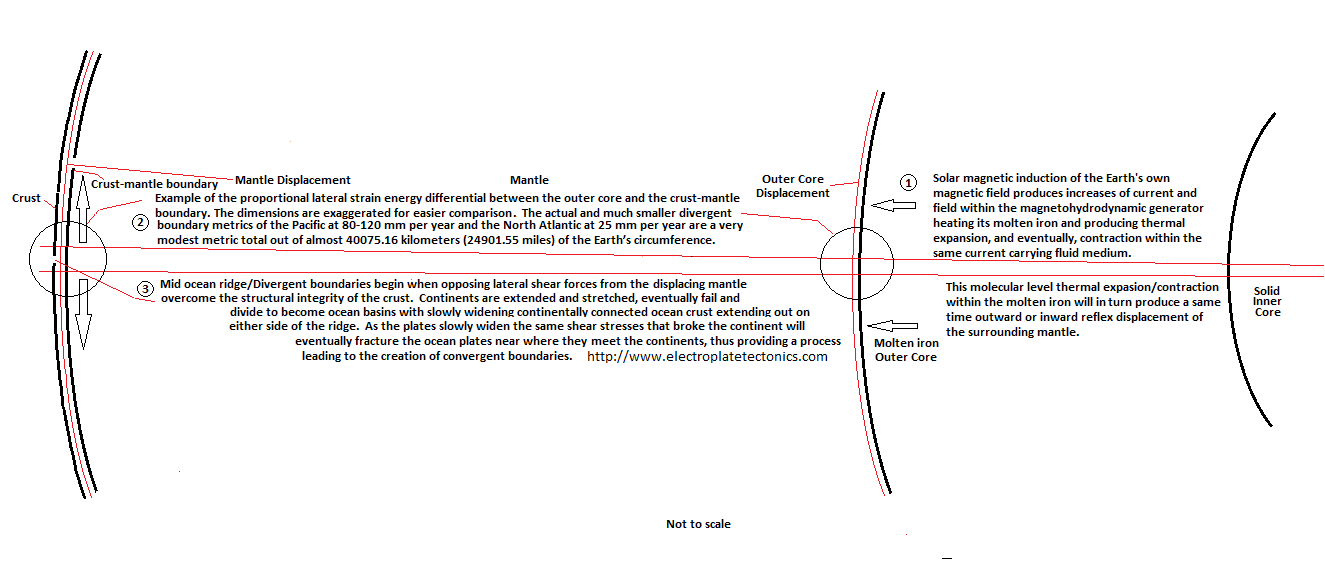

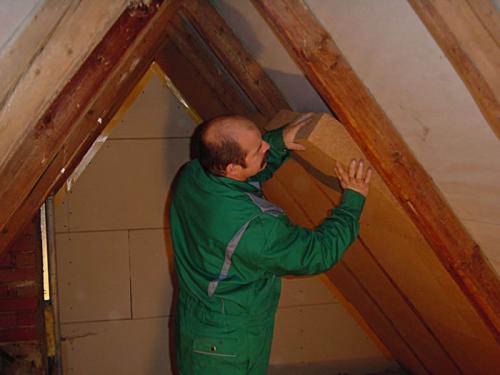

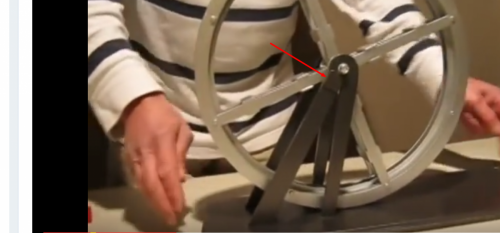


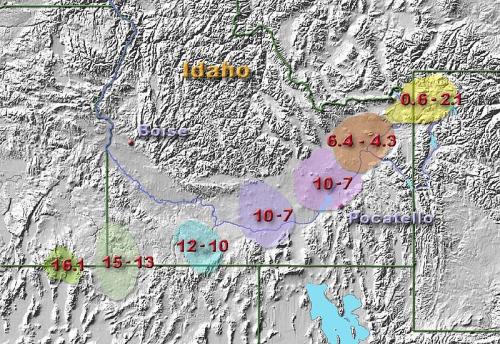


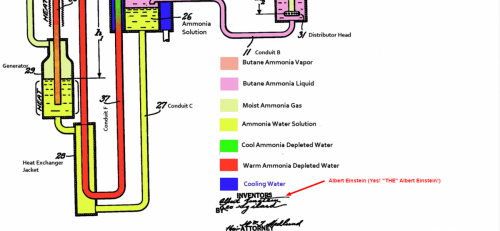

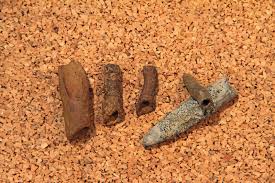
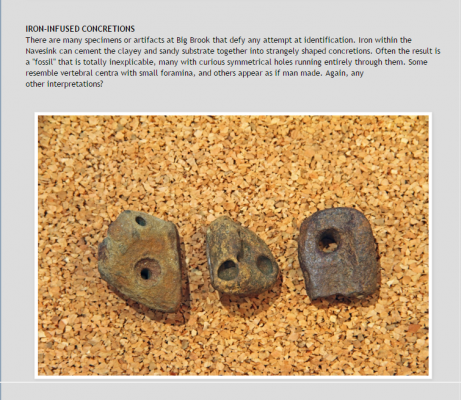
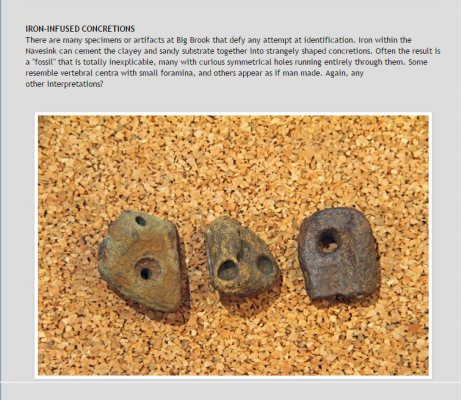

Plate tectonic mechanism ?
in Speculations
Posted
Rob, that post is quite old and much has been found in newer supporting evidence.
http://www.researchg...ure_423_499-505
"A 20-Myr record of creation of oceanic lithosphere at a segment of the central Mid-Atlantic-Ridge is exposed along an uplifted sliver of lithosphere. The degree of melting of the mantle that is upwelling below the ridge, estimated from the chemistry of the exposed mantle rocks, as well as crustal thickness inferred from gravity measurements, show oscillations of ,3–4 Myr superimposed on a longer-term steady increase with time. The time lag between oscillations of mantle melting and crustal thickness indicates that the solid mantle is upwelling at an average rate of ,25mmyr, but this appears to vary through time."
"the solid mantle is upwelling at an average rate of ,25mmyr"
It is remarkable that such accurate metrics are available of the mantle's displacement. The movement they impose on the the crust can be seen in the image below.
"show oscillations of ,3–4 Myr superimposed on a longer-term steady increase with time."
The distance between the pause and formation of the caldera indicate the total movement that is imposed by the divergent boundary infill when the mantle moves downward, the resulting GPE in the crust leverages the N. American continent westward as it and its attached oceanic plate move to a lower energy state.
This very accurate set of observations should allow the core's thermal expansion to be calculated once an accurate model of the mantle's displacement is understood. As I said earlier, the mantle produces a mechanical increase in its surface area along with thermal expansion of its entirety from proportional strain energy release. This is largely due to the thickness of the mantle and its response to the displacement when the core thermally expands and initiates the outward mantle movement.
Taking the known metrics and working backwards would seem to me to be the best approach.